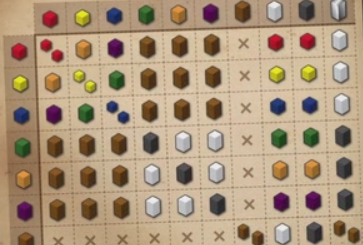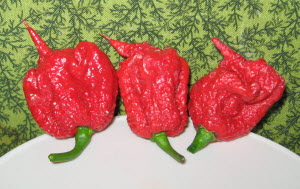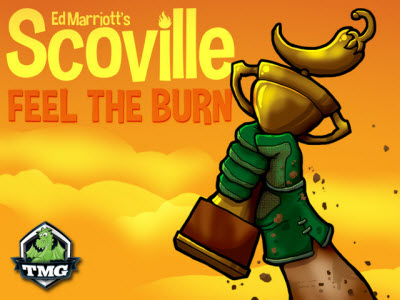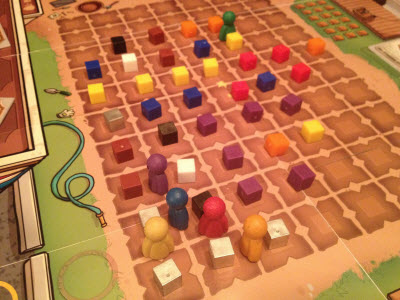At first glance, it’s understandable why some people might not find Scoville eye-catching. We get it. It’s about farming. Farming isn’t always the most alluring topic for a game. Still, time after time, games about farming continue to surprise people by being excellent examples of intricate, challenging, and otherwise rewarding designs. The latest entry to this list is TMG’s new game, Scoville. In it, you have to help the people of the town by cross-breeding plants to create some of the spiciest peppers around. Is it as hot as it claims to be? We’ve decided to go straight to the source by asking Ed Marriott, the game’s designer.
A Pepper Primer
Cardboard Republic: For those unfamiliar with the game, can you give a brief intro to Scoville?
 First, thanks so much for having this interview with me. I really appreciate it, and I hope that your readers see Scoville as a game worth backing!
First, thanks so much for having this interview with me. I really appreciate it, and I hope that your readers see Scoville as a game worth backing!
So, Scoville is a town that loves it hot! They love their peppers more than anything else. In fact, they spend so much time eating their peppers that they don’t have time to farm them. That’s where you come in. The Town of Scoville has hired you to plant and cross-breed peppers in an effort to make hotter and hotter chili recipes.
A game of Scoville is made up of a variable number of rounds, each of which has four phases: Auction, Planting, Harvesting, and Fulfillment. The auction is a blind bid that is performed simultaneously. The highest bidder chooses their spot in the turn order for the round. Then, the next highest bidder chooses, and so on. Once players have chosen their spots in the turn order, then they will choose one of the Scoville High School Fundraiser cards, and collect the pepper(s) shown on the card.
During the planting phase each player plants one of their peppers into the fields next to the existing peppers. If you plant an exotic pepper, the Town Mayor may award you bonus points for adding heat! Then the players will each harvest peppers, but this is done in reverse player order. Harvesting involves moving your farmer meeple up to three spots in the fields to cross-breed peppers. Finally, after all players have harvested they will get to fulfill the town’s Farmers’ Market orders and fulfill chili recipes in the Chili Cook-off area. That’s the basic idea of a round of Scoville.
CR: The harvesting mechanic is unique and we’re eager to see it in action. How does it work?
To harvest, players move their farmer up to three spots in the fields. For each spot along the way, if they are between two planted peppers, those peppers will cross-breed. The player harvests the cross-bred peppers.
For example, on a players turn they may move between a red and a blue pepper. Those will cross-breed and the player will receive a purple pepper. Players will cross-breed and harvest peppers for each of the three moves during their turn. This is the main way players will get peppers throughout the game.
Now, what makes this interesting is that all players have their farmer meeples in the same field. This means that other players can block you or plant bad peppers near you. Since the harvest happens in reverse player order, it’s important to bid high enough during the auction to choose the turn order spot you want. (This is why you may want to choose to go last during the round.) Going last means you harvest first. And harvesting first can be really important.
The Right Combinations
CR: How did you get this game into TMG’s hands?
I met the fine folks at Tasty Minstrel Games at GenCon 2012. My friends and I were demoing the game Kings of Air and Steam. Seth Jaffee, TMG Game Developer, was running the demo and near the end of the demo Michael Mindes, the TMG Founder, came by to check it out. I started chatting with him and we ended up going out to dinner – that I neglected to pay for. Fortunately this interview isn’t a lesson in professionalism or networking. I was able to chat with them, and they gave me a bunch of tips about the board game industry.
Then, in March of 2013 I demoed Scoville at Protospiel-Milwaukee. The game was really well received and Tasty Minstrel asked me for a copy of the prototype. I was more than happy to send one their way. It turned out that failing to pay for dinner didn’t hinder my chances with them. But for game designers out there, if you go to dinner with a publisher, at least offer to pay for dinner!
CR: Did you draw inspiration from any of the traditional Euro farming games (like Agricola)?
I didn’t draw any inspiration directly. However, I’ve played tons of Euro games, so there was probably an indirect design aspect that naturally came into the game design. The ironic thing is that as I designed the game I never really considered it a Euro game. It wasn’t until the demos at Protospiel-Milwaukee where people applied the “Euro” label to the game. Since then – with the addition of bonus abilities especially – it has taken on a slightly more “Euro” feel, which I think is a good thing.

The cross-breeding chart. Yep. That’s a Euro.
Prototype Shown.
CR: Despite the strategy involved, the game appears simple to learn. How did you ensure that this would be the case?
There are few things worse than opening a new game and grabbing the rulebook to find a 40 page behemoth with 7 point font that will take 4 hours to read. Then you sit down with your friends, and it takes another 45 minutes just to teach the game. That doesn’t seem very fun to me. One of my game design guidelines is to utilize streamlined mechanics that are familiar and to eliminate any unnecessary elements in the game. I like to consider myself a designer of “Iceberg” games. The 10% of the iceberg above the water represents the time it takes to learn and teach the game. The 90% below the water represents the depth of the strategy. If you can keep your designs simple to teach but with a lot of deep game play, I think that’s a recipe for success.
Specifically for Scoville, I started with very simple mechanics. You’ve got to bid, plant a pepper, move a pawn, harvest resources, and spend resources for points. Those things are all relatively simple and familiar. But I’ve put them together in such a way that they form a really interesting combination. Turn order is of great importance. . . .Despite the simplicity of the mechanics, or the 10% above the water, there is a lot of game under the surface, and I hope people will be able to see that.
The Heat Is On
CR: Is there a reason that you chose peppers as your crop of choice? I’d imagine that this game would work well with most vegetation.

Carolina Reapers even look scary.
I think peppers are especially tailored to the mechanics of cross-breeding because of the Scoville Hotness Scale. Players are trying to plant and cross-breed peppers to make hotter peppers. That’s the way they do it in real life.
Recently a new hottest pepper was crowned. It’s called the Carolina Reaper and it came in over 1,500,000 Scoville units. For comparison, a jalapeño is about 3,000 to 5,000 and a habañero is about 200,000. People are always competing to breed the new world’s hottest pepper, and that’s the idea I was going for with this game.
CR: Lastly, did you learn anything interesting when researching the Scoville scale? Any fun facts?
I learned that my mouth is not happy when eating hot peppers and that milk is the best thing to cut the burning sensation! I learned that it is a good idea to wear gloves when handling habañero peppers. And I learned that most people consider the Ghost pepper as the hottest when that’s not actually true. At the time I was designing the game the hottest pepper was the Trinidad Moruga Scorpion, which sounds too scary for me to even consider tasting.
The cool thing is that there are whole online communities of people who love their hot peppers. It was a really fun theme to use for a board game and I had a great time coming up with the design. Thanks for letting me write about it for your readers!

Scoville is putting your test of auctioning and farming to the test as you race to create the hottest peppers on the market. It’s sort of like real super hot pepper challenges, except it’s far, far, far less painful. In fact, we don’t recommend eating either those peppers or game pieces. What’s more appetizing, however, is that heading into its final week Scoville continues to be burning up its own track. If you want in on the pepper challenge, be sure to check out their Kickstarter!
Photo Credits: All artwork by Tasty Minstrel Games; Carolina Reaper by Wikipedia.

